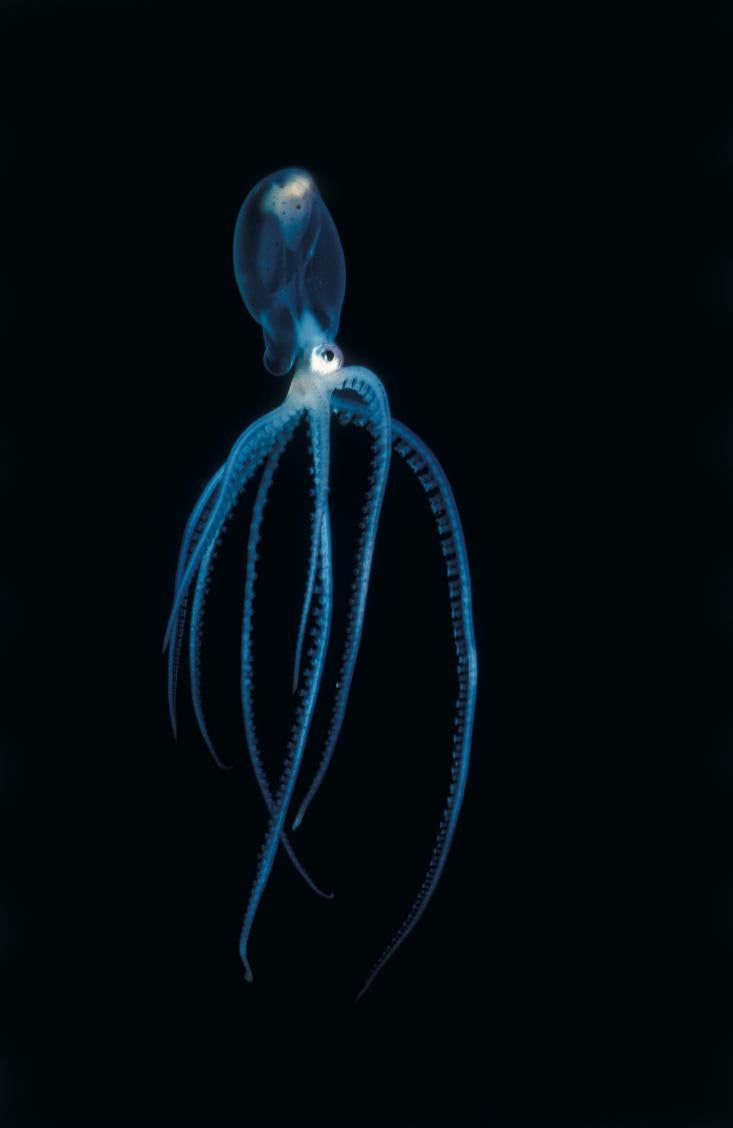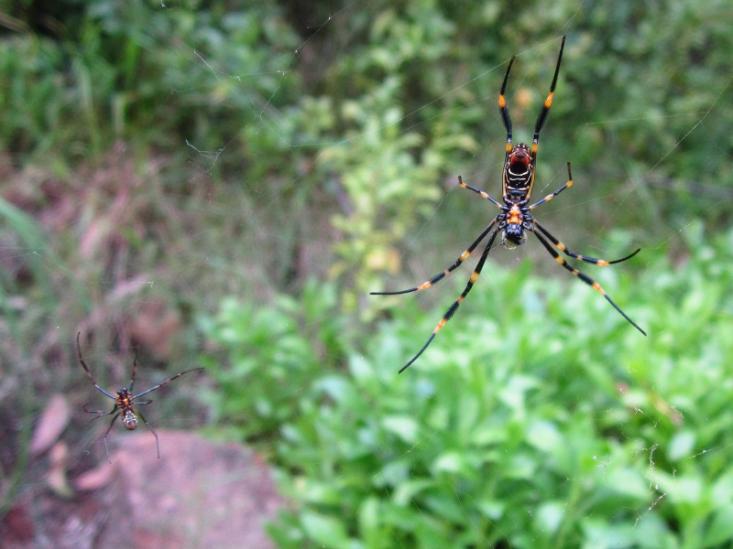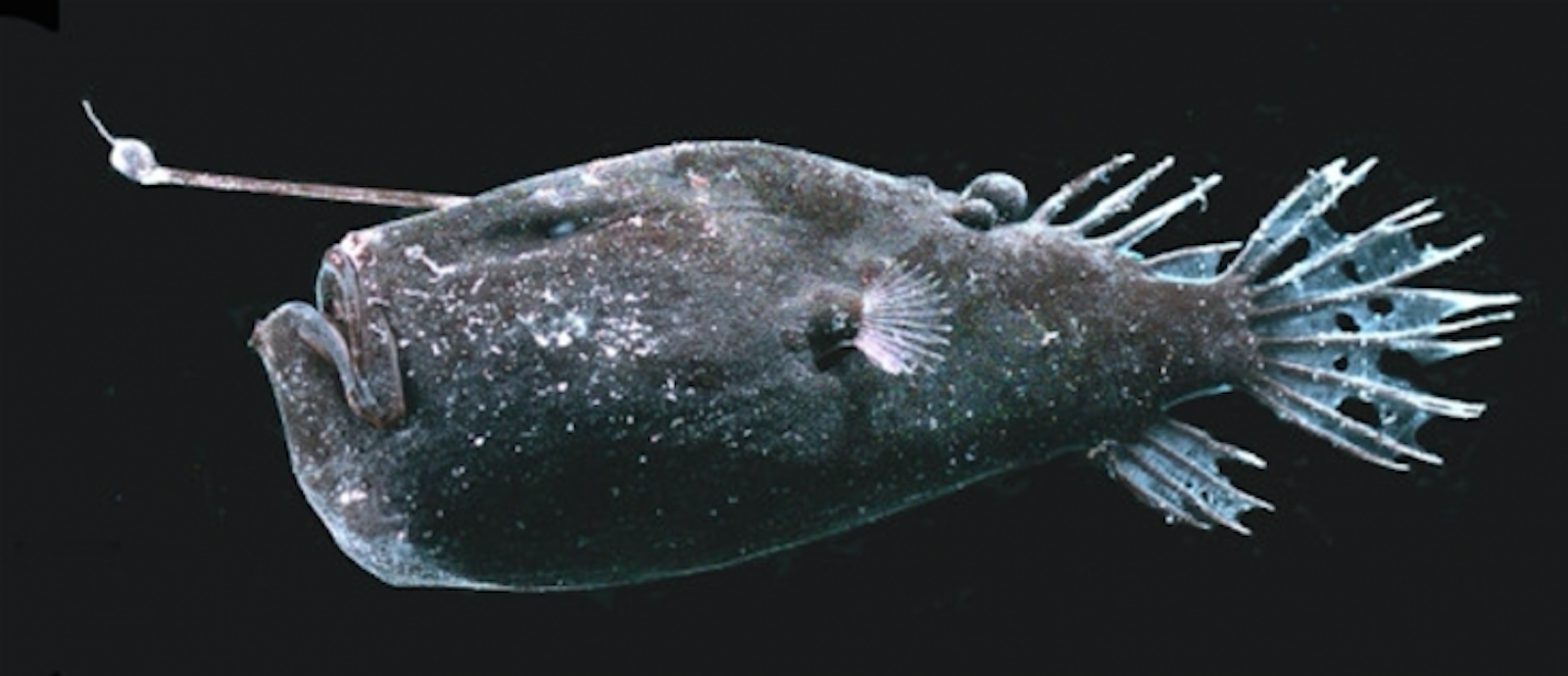Out in the clear waters near the Great Barrier Reef, a common blanket octopus male swim toward a female. This male need not worry about showing his brightest colors or engaging in a showy battle of strength in hopes of winning the female’s permission to approach. In fact it’s unclear if the female even notices his approach at all.
You see, the male blanket octopus is less than an inch long. His object of affection? She often tops six feet. How can a male this small fertilize the eggs of a female that large? Therein lies one of the trickier sex acts in the natural world.
Most animals require close contact to reproduce, using either internal fertilization (as humans do) or fertilization nearby (think spawning salmon). So having a similarly matched body size is helpful for reasons of physical logistics—as well as for personal safety (as we’ll soon see). But for causes still obscure to most—except Evolution herself—in a very few, very distantly related animals, males and females long ago diverged to two radically different scales.
The blanket octopus (Tremoctopus violaceus) is one of a handful of animals that go to great lengths to overcome their partner’s drastic difference in size. Males of the species have to mount females that are some 72 times their size. So instead of searching for a lasting union, the male removes his specialized mating arm (known as the hectocotylus), replete with his genetic contribution, and deposits it with the female for her to use at a later date—while he swims away with his seven arms to safety (and rapid senescence). (In fact, the octopus’s mating arm was named the hectocotylus because, initially, it was mistaken for a “100-suckered” parasitic worm.)

Male spiders are another example. They must be as cautious as wee octopuses because their mates are not only huge, but also frequently cannibalistic. In cases like these, small size can actually be to a male’s advantage. For the tiger spider (Nephila plumipes), a type of orb spider, the male’s extreme bittiness might diminish his odds of becoming a meal. “The female may fail to detect a small male,” researchers suggest—and “the female may ignore a small male because his size provides little in the way of a nutritional meal.” So, over time, natural selection seems to have favored smaller males, who are most successful—whether through stealth or just unappetizing scrawniness—at avoiding cannibalization prior to mounting a female (all bets are off afterward, according to scientists who watched this in action). But what stops the male tiger spider from shrinking into obscurity? This species competes with other males for access to females, so it can pay to be small—but not the smallest.

In some cases, one sex is not just a smaller version of the other, but actually fails to truly fully develop much at all. If you thought the she-octopus was a mate to be reckoned with, you have not met the female sea devil (family Ceratiidae), a type of anglerfish. This deep-sea-dwelling female has a massive toothed jaw, and a dangling bioluminescent bulb in front of her face to attract prey into her waiting maw. The male, by contrast, hunts only for the female, for she is his only chance of survival. At approximately 1/64th her size, the males lack a fully formed mouth or digestive tract. These underdeveloped fish ply the dark waters hoping to catch scent or sight of their female dirigible-savior. They use their rudimentary jaws to latch on to her underside, a bite that also releases chemicals that help to fuse the male’s mouth to the female’s body, eventually integrating him into her circulatory system. He will stay there—sometimes in the company of several other “parasitic” males—for the rest of the female’s life, absorbing nutrients from her and providing her with sperm for spawning once he and she are both mature.

These cases of extremely mismatched mates can provide challenges not only to the animals involved, but also to the humans who study them. For decades, no one had ever seen a male blanket octopus because we (silly humans) were searching for one that was similar in size to the females. It wasn’t until 2002 that one was first identified in the wild—a reminder to us to continue to look outside of our own human-sized ideas about pairing.
Katherine Harmon Courage is the author of Octopus! The Most Mysterious Creature In the Sea, a contributing editor for Scientific American and freelance journalist.






























